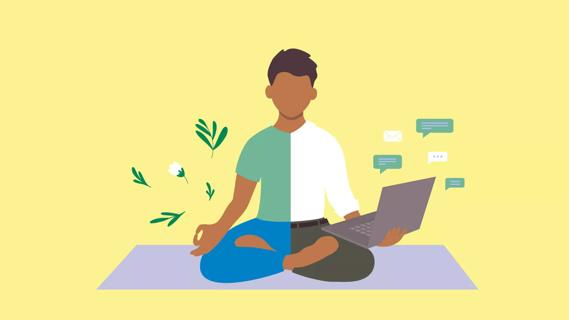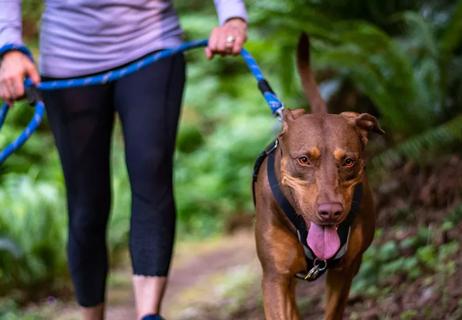This yogic breathing technique may help relieve stress and anxiety

Cue Katy Perry’s song “Roar” and get ready to practice lion’s breath, a yogic breathing technique that’ll have you acting like the king of the jungle and feeling like the king of the world.
Advertisement
Cleveland Clinic is a non-profit academic medical center. Advertising on our site helps support our mission. We do not endorse non-Cleveland Clinic products or services. Policy
Functional medicine specialist Melissa Young, MD, explains how doing your best Simba imitation may help you feel both relaxed and empowered.
Known in Sanskrit as simha pranayama, lion’s breath is a yogic breathing technique in which you mimic a lion’s roar — minus the roaring part.
Where many breathing techniques are quiet, slow and gentle, lion’s breath is a bit more overtly powerful. As you do it, you stick out your tongue and let out an audible exhale: A big, whooshing “haaaa” sound.
There’s very little research on the science of lion’s breath in particular, but there are plenty of studies about the value of breathwork techniques (pranayama) overall. Dr. Young explains a few of them.
When you’re in the habit of regularly practicing breathing techniques, you increase your oxygen levels and your lung capacity. One study says that regular pranayama helps improve nearly all of your lung functions.
“Practicing deep and intentional breathing can expand the lungs and strengthen your respiratory muscles,” Dr. Young adds.
Pranayama has been shown to be a powerful tool for managing and reducing stress.
“When you practice yogic breathing, you activate your body’s parasympathetic nervous system and move out of fight-or-flight mode,” Dr. Young explains. “These breathing techniques are also associated with lower levels of the stress hormone cortisol.”
Advertisement
Plus, the facial movements that come with lion’s breath in particular — like opening your mouth and sticking out your tongue — activate your facial muscles, which can release tension there.
If you deal with fear and anxiety in social settings, lion’s breath could help you feel more confident facing the world.
One study found that a yoga sequence including simhasana, the yoga pose associated with lion’s breath, may be especially helpful for introverts who cope with social anxiety disorders.
For some people with chronic pain, a study found that lion’s breath was “excessively stimulating and disorienting,” resulting in lightheadedness.
“If you’re prone to dizzy spells, skip lion’s breath,” Dr. Young advises, “and be sure to speak with your healthcare provider to figure out the source of that issue.”
You can practice simha pranayama anywhere, whether you’re in the quiet of your office or just trying to unwind at home. Dr. Young explains how to do it:
“Lion’s breath might feel sort of silly at first,” Dr. Young acknowledges, “but as you practice it, you’ll start to feel more comfortable and less inhibited.”
There’s also a related yoga pose, known as roaring lion pose or simhasana, in which you imitate a lion with the rest of your body, too. Starting on your knees, settle your weight back a bit, with your hips resting at your heels. Press your hands into the floor in front of you.
But you don’t need to do the yoga pose to reap the effects of the breathing technique.
“You can incorporate lion’s breath into your yoga practice,” Dr. Young says, “but you can also do it as a standalone practice, whenever you want.”
Advertisement
Learn more about our editorial process.
Advertisement

Weightlifting and other types of resistance training bring many health benefits

Many claims lack science-backed research, but halotherapy is popular and considered safe

This five-day exercise plan for beginners includes three days of resistance training, two days of cardio and two days of rest

The nocebo effect is a phenomenon where expectations of negative outcomes may influence the results

Feeling lonely may increase your risk of cardiovascular disease, depression and high blood pressure

Life coaches can be great sounding boards, mentors and even friends — but they’re not healthcare providers

Start the new year with the best health tips on nutrition, mental health, sleep and more

They can provide social, physical, mental and emotional boosts!

If you’re feeling short of breath, sleep can be tough — propping yourself up or sleeping on your side may help

If you fear the unknown or find yourself needing reassurance often, you may identify with this attachment style

If you’re looking to boost your gut health, it’s better to get fiber from whole foods